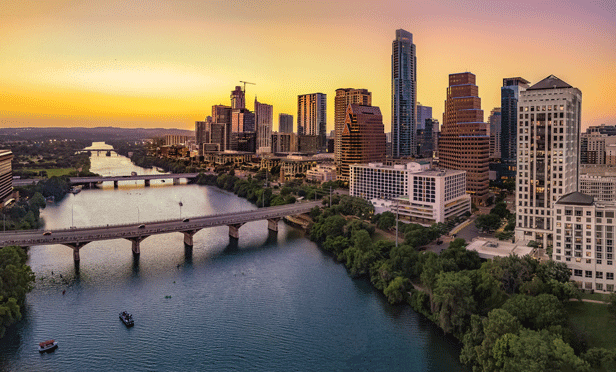Apartment makeovers—There are rows and rows on streets and streets of highly attractive, but falling apart multi-colored townhouse structures, waiting for massive upgrades. Marble staircases, wrought iron verandas, colonnaded entries, and courtyard gardens are ready for full scale makeovers.
Office buildings—Various mid-sized art deco towers and a smattering of Soviet-inspired nouveaux Cold War prison-like edifices rise up around the city. You can be sure nothing is LEED certified.
Hotels—The harbor front Malecon esplanade cries out for more modern-ocean view accommodations to accompany the famous and handsome Hotel Nacional, which stands out on a modest bluff overlooking the clustered proletarians seeking a sea breeze or fishing across the way on the breakwater. Up the street, mobster Meyer Lansky's 50s-style, blue-tiled Riviera (think Godfather II, Michael making deals on the penthouse balcony just before the revolution) sits dark except for its neon yellow roof top sign and the Copa Room ground floor bar—Mojito anyone? A few other modernized hotels like the Saratoga skirt the old city, but putting on the Ritz is not much in evidence.
Resorts—The beachfront hotels east and west of the city might have worked for sourpuss Soviet apparatchiks looking for something better than Black Sea bathing and the thin population sliver of made-man-and-woman Cuban government elites, but either these lodgings feature sterile amenities or have aged into dumps.
Retail—Shopping Centers Hunh? High Street Retail. Whah? Spendthrifts will have trouble satisfying their appetites here, in fact, Cuba is a great place to take your shopaholic spouse… It actually is hard to spot where people buy stuff. If you can find a store of any stripe, shelves are nearly bare. In warm climes and with small government-set incomes, t-shirts, shorts and sneakers can get you by—brands are nowhere to be seen, although I found a building with a dated Philips Hotpoint logo over what is now a tourist restaurant. Actually it's rather refreshing to be in a place without Yankee fast food signs and smells. And how long before the first Starbucks shows up? That would be a pity.
Infrastructure—Just about the whole city needs to be repaved. People are friendly, street crime seems non-existent despite evident poverty (they have enough to eat, a place to sleep, free medical, and no guns) so the biggest danger really is tripping on the crumbling, hole-pocked sidewalks or falling over broken curbs. I knew where President Obama would visit just by coming upon road crews feverishly smoothing out new asphalt on streets near top tourist attractions hours before his arrival. As for Jose Marti, the international airport makes New York's LaGuardia look cutting edge 21st Century by comparison. Start with no jetways and waiting two hours for your bag.
So in the wake of the President's visit and the Tamp Bay baseball win will the Castro regime open the door wide to U.S. investment and welcome in developers? “Unlikely” says a British diplomat I ran into. “Cuba moves very slowly.” It almost certainly won't happen until, if as planned, Raul Castro steps down in a couple of years, and at present there seems little interest in giving free rein to any outsiders—the government would keep majority stake in any enterprise.
But more U.S. tourists will be coming with eased visiting restrictions and the people want any dollars and euros they can scrounge. Two college professors picked me up at the airport to earn the cab fare and they eagerly arranged to take me back. At an upscale restaurant the late 20s-something head waiter Pedro with an engineering degree had left his government job to work 18 hour days, making considerably more earning tips. Those allowed to open their homes for Airbnb-style accommodations at $30-$50 a night are setting themselves apart economically too. Foreign induced capitalism is creeping into the system.
Hovering overall is Fidel—still alive and probably wielding some level of control even in retirement. The U.S. has been waiting for him to pass on for more than 50 years and meanwhile the real estate potential locked in crumbling Havana waits too.
Apartment makeovers—There are rows and rows on streets and streets of highly attractive, but falling apart multi-colored townhouse structures, waiting for massive upgrades. Marble staircases, wrought iron verandas, colonnaded entries, and courtyard gardens are ready for full scale makeovers.
Office buildings—Various mid-sized art deco towers and a smattering of Soviet-inspired nouveaux Cold War prison-like edifices rise up around the city. You can be sure nothing is LEED certified.
Hotels—The harbor front Malecon esplanade cries out for more modern-ocean view accommodations to accompany the famous and handsome Hotel Nacional, which stands out on a modest bluff overlooking the clustered proletarians seeking a sea breeze or fishing across the way on the breakwater. Up the street, mobster Meyer Lansky's 50s-style, blue-tiled Riviera (think Godfather II, Michael making deals on the penthouse balcony just before the revolution) sits dark except for its neon yellow roof top sign and the Copa Room ground floor bar—Mojito anyone? A few other modernized hotels like the Saratoga skirt the old city, but putting on the Ritz is not much in evidence.
Resorts—The beachfront hotels east and west of the city might have worked for sourpuss Soviet apparatchiks looking for something better than Black Sea bathing and the thin population sliver of made-man-and-woman Cuban government elites, but either these lodgings feature sterile amenities or have aged into dumps.
Retail—Shopping Centers Hunh? High Street Retail. Whah? Spendthrifts will have trouble satisfying their appetites here, in fact, Cuba is a great place to take your shopaholic spouse… It actually is hard to spot where people buy stuff. If you can find a store of any stripe, shelves are nearly bare. In warm climes and with small government-set incomes, t-shirts, shorts and sneakers can get you by—brands are nowhere to be seen, although I found a building with a dated Philips Hotpoint logo over what is now a tourist restaurant. Actually it's rather refreshing to be in a place without Yankee fast food signs and smells. And how long before the first Starbucks shows up? That would be a pity.
Infrastructure—Just about the whole city needs to be repaved. People are friendly, street crime seems non-existent despite evident poverty (they have enough to eat, a place to sleep, free medical, and no guns) so the biggest danger really is tripping on the crumbling, hole-pocked sidewalks or falling over broken curbs. I knew where President Obama would visit just by coming upon road crews feverishly smoothing out new asphalt on streets near top tourist attractions hours before his arrival. As for Jose Marti, the international airport makes
So in the wake of the President's visit and the Tamp Bay baseball win will the Castro regime open the door wide to U.S. investment and welcome in developers? “Unlikely” says a British diplomat I ran into. “Cuba moves very slowly.” It almost certainly won't happen until, if as planned, Raul Castro steps down in a couple of years, and at present there seems little interest in giving free rein to any outsiders—the government would keep majority stake in any enterprise.
But more U.S. tourists will be coming with eased visiting restrictions and the people want any dollars and euros they can scrounge. Two college professors picked me up at the airport to earn the cab fare and they eagerly arranged to take me back. At an upscale restaurant the late 20s-something head waiter Pedro with an engineering degree had left his government job to work 18 hour days, making considerably more earning tips. Those allowed to open their homes for Airbnb-style accommodations at $30-$50 a night are setting themselves apart economically too. Foreign induced capitalism is creeping into the system.
Hovering overall is Fidel—still alive and probably wielding some level of control even in retirement. The U.S. has been waiting for him to pass on for more than 50 years and meanwhile the real estate potential locked in crumbling Havana waits too.
Want to continue reading?
Become a Free ALM Digital Reader.
Once you are an ALM Digital Member, you’ll receive:
- Breaking commercial real estate news and analysis, on-site and via our newsletters and custom alerts
- Educational webcasts, white papers, and ebooks from industry thought leaders
- Critical coverage of the property casualty insurance and financial advisory markets on our other ALM sites, PropertyCasualty360 and ThinkAdvisor
Already have an account? Sign In Now
*May exclude premium content© 2024 ALM Global, LLC, All Rights Reserved. Request academic re-use from www.copyright.com. All other uses, submit a request to [email protected]. For more information visit Asset & Logo Licensing.









